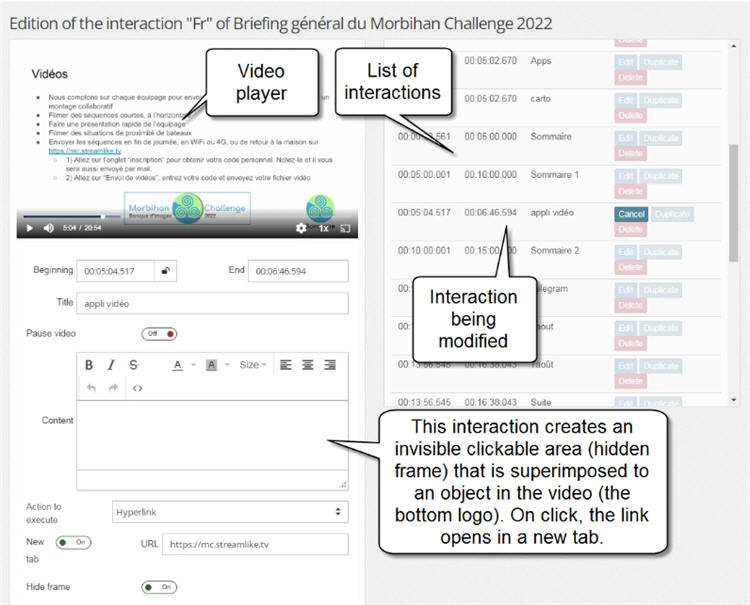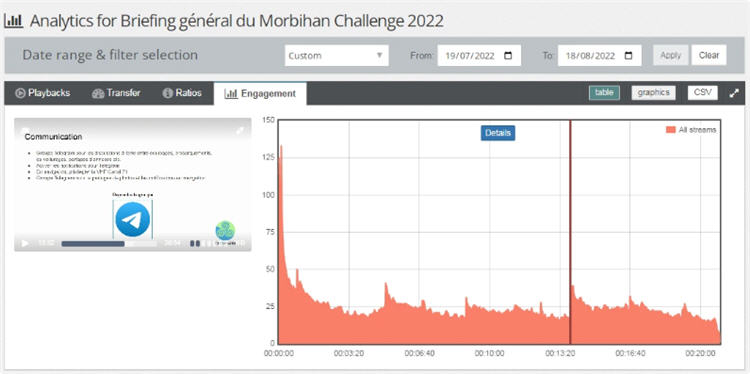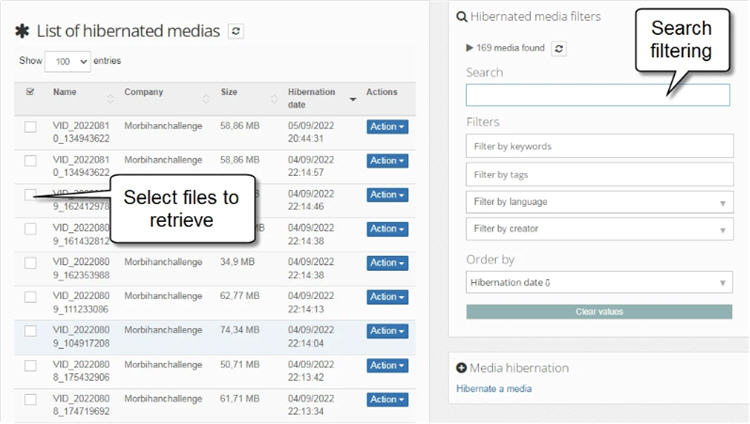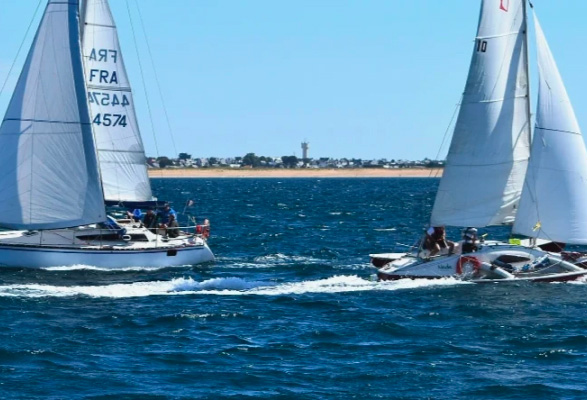As part of its partnership with the Morbihan Challenge, Streamlike deploys new solutions every year to meet video-related needs.
- In 2019, we had created a Streamwatch, to collect videos dropped on Twitter by competitors and associated with a hashtag.
- In 2020, we had created a video upload web-app for immediate publication, created a video upload box, and created a StreamOut for the 2021 edition announcement press conference, in faux-direct.
This year we created interactive videos and used hibernation for collecting video contributions.
Interactive briefings
The need to video-record briefings dates back to the covid pandemic. It was the easiest way to address all the participants without having to physically gather them. Since then, it has become the most effective way to pass on instructions with the possibility of replaying them endlessly.
The interactions provided an additional comfort. Since some instructions were already known and it was just a matter of recalling them, the interactive menus made it easy to skip them and go straight to the new instructions.
The design of the video was very simple. It was created from a Powerpoint presentation and the clickable areas were clearly materialized in the slides.
The interactions created are of several types:
- non-clickable text and annotations
- texts or clickable areas opening a link in an external tab
- texts or clickable areas replacing the video content of the player
- texts or clickable zones allowing to go to a point of the video and to pause it
- texts or clickable zones allowing to go to a point of the video and to continue the reading
When an interaction is reached, you can decide to pause the video or to continue playing.
The interaction editor is very similar to the chapter or subtitle editor. Here is an overview:

The engagement graph shows which parts of the video were viewed the most, which is an indicator of what information participants were seeking:

Here’s the interactive briefing video :
Hibernation of raw footage
This year, it was decided to make an entirely collaborative film. In other words, the film would not contain any images other than those of the participants themselves. The question then arose as to how to get them.
Ask a production company and they will invariably tell you to send raw footage via WeTransfer. This service may be simple and free, but it is not ideal for a project like this one, which aims to centralize all the footage, allow for easy searching and create selections for different stakeholders.
For this, the hibernation mechanism is particularly suitable. The video files are indexed and stored on an archive server, without being transcoded. You can see them on your Streamlike console, but you can only play them after they have been downloaded.
Drop off
The hibernation of a video file is normally done via the Streamlike console, by drag and drop, by selection from the FTP account or by retrieval from an external URL.
In the case of the Morbihan Challenge, a micro-webApp had been developed based on the API to allow all crews to send their videos without having access to the Streamlike console. Each crew registered to obtain an access code (sent by email) to automatically identify the author of the upload and the name of the boat associated with the video file.
Retrieval
For example, the film director could send a selection of footage to a person in charge of cleaning up the sound or editing a particular sequence in order to distribute and accelerate the work. The selection is sent in the form of an email with download links valid for 72 hours.

Used for the first time with a very non-geeky audience, this app collected more than 250 videos shot with phones, action cameras or drones, providing more than 7 hours of raw footage in full quality, to make this 31-minute film :
